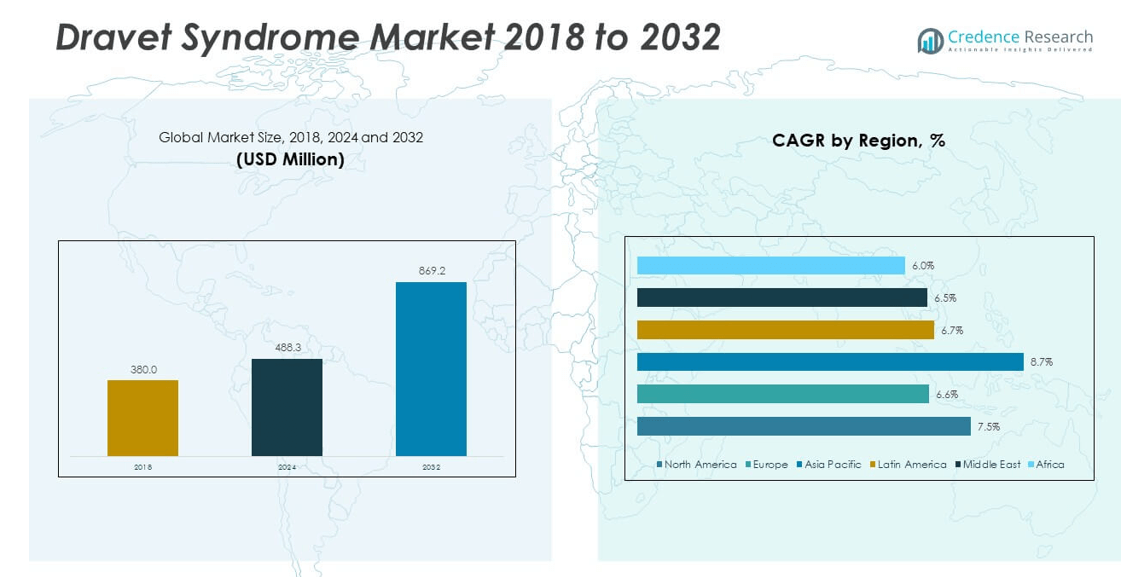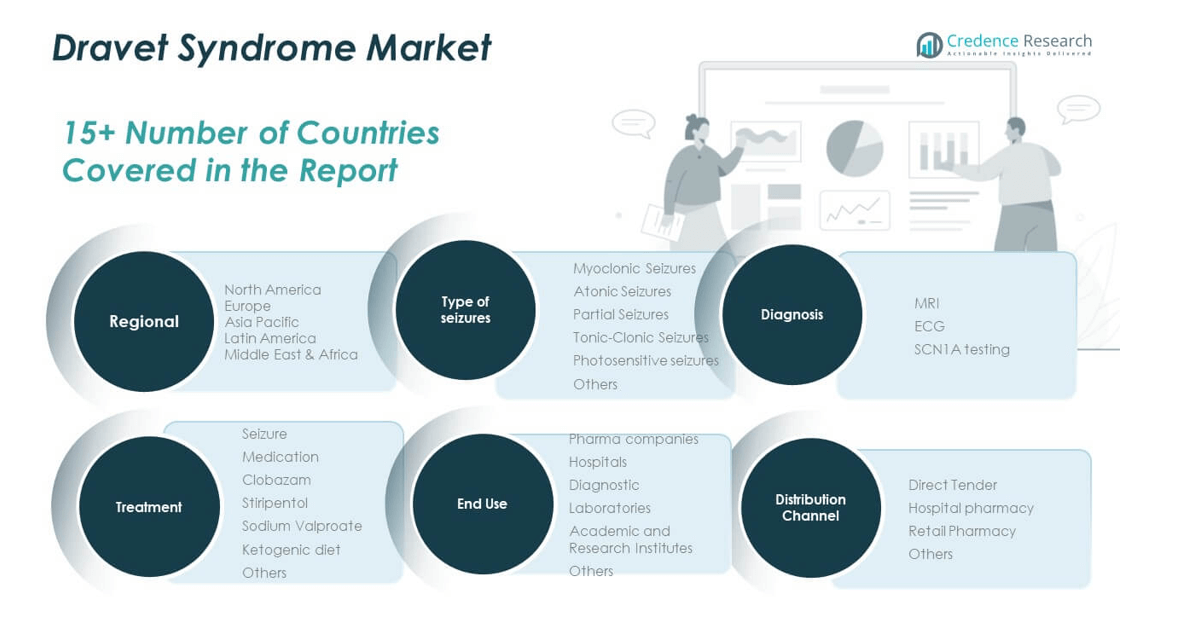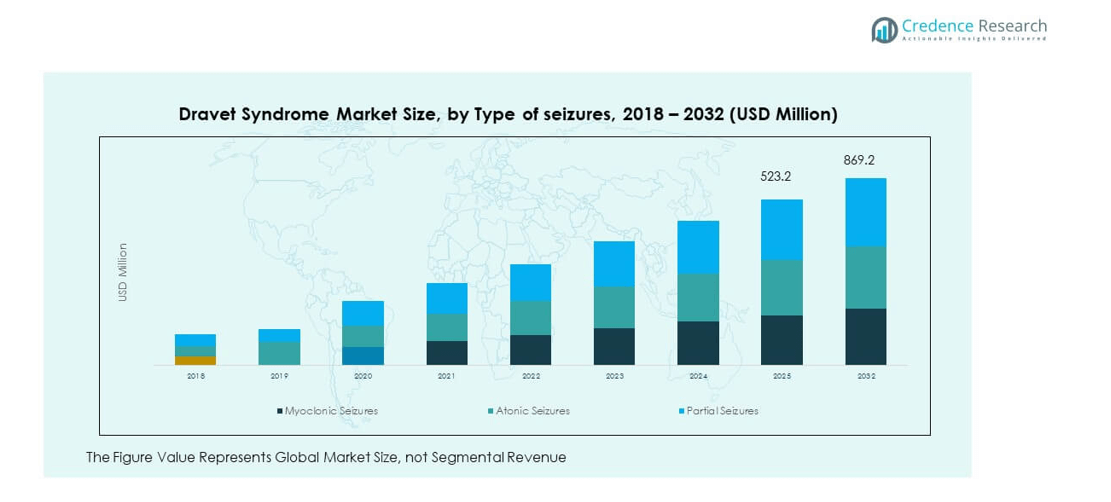CHAPTER NO. 1 : GENESIS OF THE MARKET
1.1 Market Prelude – Introduction & Scope
1.2 The Big Picture – Objectives & Vision
1.3 Strategic Edge – Unique Value Proposition
1.4 Stakeholder Compass – Key Beneficiaries
CHAPTER NO. 2 : EXECUTIVE LENS
2.1 Pulse of the Industry – Market Snapshot
2.2 Growth Arc – Revenue Projections (USD Million)
2.3. Premium Insights – Based on Primary Interviews
CHAPTER NO. 3 : DRAVET SYNDROME MARKET FORCES & INDUSTRY PULSE
3.1 Foundations of Change – Market Overview
3.2 Catalysts of Expansion – Key Market Drivers
3.2.1 Momentum Boosters – Growth Triggers
3.2.2 Innovation Fuel – Disruptive Technologies
3.3 Headwinds & Crosswinds – Market Restraints
3.3.1 Regulatory Tides – Compliance Challenges
3.3.2 Economic Frictions – Inflationary Pressures
3.4 Untapped Horizons – Growth Potential & Opportunities
3.5 Strategic Navigation – Industry Frameworks
3.5.1 Market Equilibrium – Porter’s Five Forces
3.5.2 Ecosystem Dynamics – Value Chain Analysis
3.5.3 Macro Forces – PESTEL Breakdown
3.6 Price Trend Analysis
3.6.1 Regional Price Trend
3.6.2 Price Trend by product
CHAPTER NO. 4 : KEY INVESTMENT EPICENTER
4.1 Regional Goldmines – High-Growth Geographies
4.2 Product Frontiers – Lucrative Product Categories
4.3 Deployment Sweet Spots – Emerging Demand Segments
CHAPTER NO. 5: REVENUE TRAJECTORY & WEALTH MAPPING
5.1 Momentum Metrics – Forecast & Growth Curves
5.2 Regional Revenue Footprint – Market Share Insights
5.3 Segmental Wealth Flow – Type of seizures & Deployment Revenue
CHAPTER NO. 6 : TRADE & COMMERCE ANALYSIS
6.1. Import Analysis by Region
6.1.1. Global Dravet Syndrome Market Import Revenue By Region
6.2. Export Analysis by Region
6.2.1. Global Dravet Syndrome Market Export Revenue By Region
CHAPTER NO. 7 : COMPETITION ANALYSIS
7.1. Company Market Share Analysis
7.1.1. Global Dravet Syndrome Market: Company Market Share
7.2. Global Dravet Syndrome Market Company Revenue Market Share
7.3. Strategic Developments
7.3.1. Acquisitions & Mergers
7.3.2. New Product Launch
7.3.3. Regional Expansion
7.4. Competitive Dashboard
7.5. Company Assessment Metrics, 2024
CHAPTER NO. 8 : DRAVET SYNDROME MARKET – BY TYPE OF SEIZURES SEGMENT ANALYSIS
8.1. Dravet Syndrome Market Overview by Type of seizures Segment
8.1.1. Dravet Syndrome Market Revenue Share By Type of seizures
8.2. Myoclonic Seizures
8.3. Atonic Seizures
8.4. Partial Seizures
8.5. Tonic-Clonic Seizures
8.6. Photosensitive seizures
8.7. Others
CHAPTER NO. 9 : DRAVET SYNDROME MARKET – BY DIAGNOSIS SEGMENT ANALYSIS
9.1. Dravet Syndrome Market Overview by Diagnosis Segment
9.1.1. Dravet Syndrome Market Revenue Share By Diagnosis
9.2. MRI
9.3. ECG
9.4. SCN1A testing
CHAPTER NO. 10 : DRAVET SYNDROME MARKET – BY SCREEN SIZE SEGMENT ANALYSIS
10.1. Dravet Syndrome Market Overview by Screen Size Segment
10.1.1. Dravet Syndrome Market Revenue Share By Screen Size
10.2. Seizure
10.3. Medication
10.4. Clobazam
10.5. Stiripentol
10.6. Sodium Valproate
10.7. Ketogenic diet
10.8. Others
CHAPTER NO. 11 : DRAVET SYNDROME MARKET – BY END-USE SEGMENT ANALYSIS
11.1. Dravet Syndrome Market Overview by End-Use Segment
11.1.1. Dravet Syndrome Market Revenue Share By End-Use
11.2. Pharma companies
11.3. Hospitals
11.4. Diagnostic
11.5. Laboratories
11.6. Academic and Research Institutes
11.7. Others
CHAPTER NO. 12 : DRAVET SYNDROME MARKET – BY DISTRIBUTION CHANNEL SEGMENT ANALYSIS
12.1. Dravet Syndrome Market Overview by Distribution Channel Segment
12.1.1. Dravet Syndrome Market Revenue Share By Distribution Channel
12.2. Direct Tender
12.3. Hospital pharmacy
12.4. Retail Pharmacy
12.5. Others
CHAPTER NO. 13 : DRAVET SYNDROME MARKET – REGIONAL ANALYSIS
13.1. Dravet Syndrome Market Overview by Region Segment
13.1.1. Global Dravet Syndrome Market Revenue Share By Region
13.1.2. Regions
13.1.3. Global Dravet Syndrome Market Revenue By Region
13.1.4. Type of seizures
13.1.5. Global Dravet Syndrome Market Revenue By Type of seizures
13.1.6. Deployment
13.1.7. Global Dravet Syndrome Market Revenue By Deployment
13.1.8. Screen Size
13.1.9. Global Dravet Syndrome Market Revenue By Screen Size
13.1.10. End-User Industry
13.1.12. Global Dravet Syndrome Market Revenue By End-User Industry
13.1.13. Distribution Channel
13.1.14. Global Dravet Syndrome Market Revenue By Distribution Channel
CHAPTER NO. 14 : NORTH AMERICA DRAVET SYNDROME MARKET – COUNTRY ANALYSIS
14.1. North America Dravet Syndrome Market Overview by Country Segment
14.1.1. North America Dravet Syndrome Market Revenue Share By Region
14.2. North America
14.2.1. North America Dravet Syndrome Market Revenue By Country
14.2.2. Type of seizures
14.2.3. North America Dravet Syndrome Market Revenue By Type of seizures
14.2.4. Deployment
14.2.5. North America Dravet Syndrome Market Revenue By Deployment
14.2.6. Screen Size
14.2.7. North America Dravet Syndrome Market Revenue By Screen Size
14.2.8. End-User Industry
14.2.9. North America Dravet Syndrome Market Revenue By End-User Industry
14.2.10. Distribution Channel
14.2.11. North America Dravet Syndrome Market Revenue By Distribution Channel
14.3. U.S.
14.4. Canada
14.5. Mexico
CHAPTER NO. 15 : EUROPE DRAVET SYNDROME MARKET – COUNTRY ANALYSIS
15.1. Europe Dravet Syndrome Market Overview by Country Segment
15.1.1. Europe Dravet Syndrome Market Revenue Share By Region
15.2. Europe
15.2.1. Europe Dravet Syndrome Market Revenue By Country
15.2.2. Type of seizures
15.2.3. Europe Dravet Syndrome Market Revenue By Type of seizures
15.2.4. Deployment
15.2.5. Europe Dravet Syndrome Market Revenue By Deployment
15.2.6. Screen Size
15.2.7. Europe Dravet Syndrome Market Revenue By Screen Size
15.2.8. End-User Industry
15.2.9. Europe Dravet Syndrome Market Revenue By End-User Industry
15.2.10. Distribution Channel
15.2.11. Europe Dravet Syndrome Market Revenue By Distribution Channel
15.3. UK
15.4. France
15.5. Germany
15.6. Italy
15.7. Spain
15.8. Russia
15.9. Rest of Europe
CHAPTER NO. 16 : ASIA PACIFIC DRAVET SYNDROME MARKET – COUNTRY ANALYSIS
16.1. Asia Pacific Dravet Syndrome Market Overview by Country Segment
16.1.1. Asia Pacific Dravet Syndrome Market Revenue Share By Region
16.2. Asia Pacific
16.2.1. Asia Pacific Dravet Syndrome Market Revenue By Country
16.2.2. Type of seizures
16.2.3. Asia Pacific Dravet Syndrome Market Revenue By Type of seizures
16.2.4. Deployment
16.2.5. Asia Pacific Dravet Syndrome Market Revenue By Deployment
16.2.6. Screen Size
16.2.7. Asia Pacific Dravet Syndrome Market Revenue By Screen Size
16.2.8. End-User Industry
16.2.9. Asia Pacific Dravet Syndrome Market Revenue By End-User Industry
16.2.10. Distribution Channel
16.2.11. Asia Pacific Dravet Syndrome Market Revenue By Distribution Channel
16.3. China
16.4. Japan
16.5. South Korea
16.6. India
16.7. Australia
16.8. Southeast Asia
16.9. Rest of Asia Pacific
CHAPTER NO. 17 : LATIN AMERICA DRAVET SYNDROME MARKET – COUNTRY ANALYSIS
17.1. Latin America Dravet Syndrome Market Overview by Country Segme
17.1.1. Latin America Dravet Syndrome Market Revenue Share By Region
17.2. Latin America
17.2.1. Latin America Dravet Syndrome Market Revenue By Country
17.2.2. Type of seizures
17.2.3. Latin America Dravet Syndrome Market Revenue By Type of seizures
17.2.4. Deployment
17.2.5. Latin America Dravet Syndrome Market Revenue By Deployment
17.2.6. Screen Size
17.2.7. Latin America Dravet Syndrome Market Revenue By Screen Size
17.2.8. End-User Industry
17.2.9. Latin America Dravet Syndrome Market Revenue By End-User Industry
17.2.10. Distribution Channel
17.2.11. Latin America Dravet Syndrome Market Revenue By Distribution Channel
17.3. Brazil
17.4. Argentina
17.5. Rest of Latin America
CHAPTER NO. 18 : MIDDLE EAST DRAVET SYNDROME MARKET – COUNTRY ANALYSIS
18.1. Middle East Dravet Syndrome Market Overview by Country Segment
18.1.1. Middle East Dravet Syndrome Market Revenue Share By Region
18.2. Middle East
18.2.1. Middle East Dravet Syndrome Market Revenue By Country
18.2.2. Type of seizures
18.2.3. Middle East Dravet Syndrome Market Revenue By Type of seizures
18.2.4. Deployment
18.2.5. Middle East Dravet Syndrome Market Revenue By Deployment
18.2.6. Screen Size
18.2.7. Middle East Dravet Syndrome Market Revenue By Screen Size
18.2.8. End-User Industry
18.2.9. Middle East Dravet Syndrome Market Revenue By End-User Industry
18.2.10. Distribution Channel
18.2.11. Middle East Dravet Syndrome Market Revenue By Distribution Channel
18.3. GCC Countries
18.4. Israel
18.5. Turkey
18.6. Rest of Middle East
CHAPTER NO. 19 : AFRICA DRAVET SYNDROME MARKET – COUNTRY ANALYSIS
19.1. Africa Dravet Syndrome Market Overview by Country Segment
19.1.1. Africa Dravet Syndrome Market Revenue Share By Region
19.2. Africa
19.2.1. Africa Dravet Syndrome Market Revenue By Country
19.2.2. Type of seizures
19.2.3. Africa Dravet Syndrome Market Revenue By Type of seizures
19.2.4. Deployment
19.2.5. Africa Dravet Syndrome Market Revenue By Deployment
19.2.6. Screen Size
19.2.7. Africa Dravet Syndrome Market Revenue By Screen Size
19.2.8. End-User Industry
19.2.9. Africa Dravet Syndrome Market Revenue By End-User Industry
19.2.10. Distribution Channel
19.2.11. Africa Dravet Syndrome Market Revenue By Distribution Channel
19.3. South Africa
19.4. Egypt
19.5. Rest of Africa
CHAPTER NO. 20 : COMPANY PROFILES
20.1. Stoke Therapeutics (USA)
20.1.1. Company Overview
20.1.2. Product Portfolio
20.1.3. Financial Overview
20.1.4. Recent Developments
20.1.5. Growth Strategy
20.1.6. SWOT Analysis
20.2. Lundbeck A/S (Denmark)
20.3. Sanofi (France)
20.4. Biocodex S.A. (France)
20.5. Jazz Pharmaceuticals plc (Ireland)
20.6. Ovid Therapeutics Inc. (USA)
20.7. AbbVie Inc. (USA)
20.8. PTC Therapeutics Inc. (USA)
20.9. Epygenix Therapeutics Inc. (USA)
20.10. Marinus Pharmaceuticals Inc. (USA)
20.11. Neurocrine Biosciences Inc. (USA)
20.12. Aquestive Therapeutics Inc. (USA)
20.13. Anavex Life Sciences Corp. (USA)
20.14. Supernus Pharmaceuticals Inc. (USA)
20.15. Xenon Pharmaceuticals Inc. (Canada)
20.16. Zydus Lifesciences Ltd. (India)
20.17. Sun Pharmaceutical Industries Ltd. (India)
20.18. Lupin Ltd. (India)






